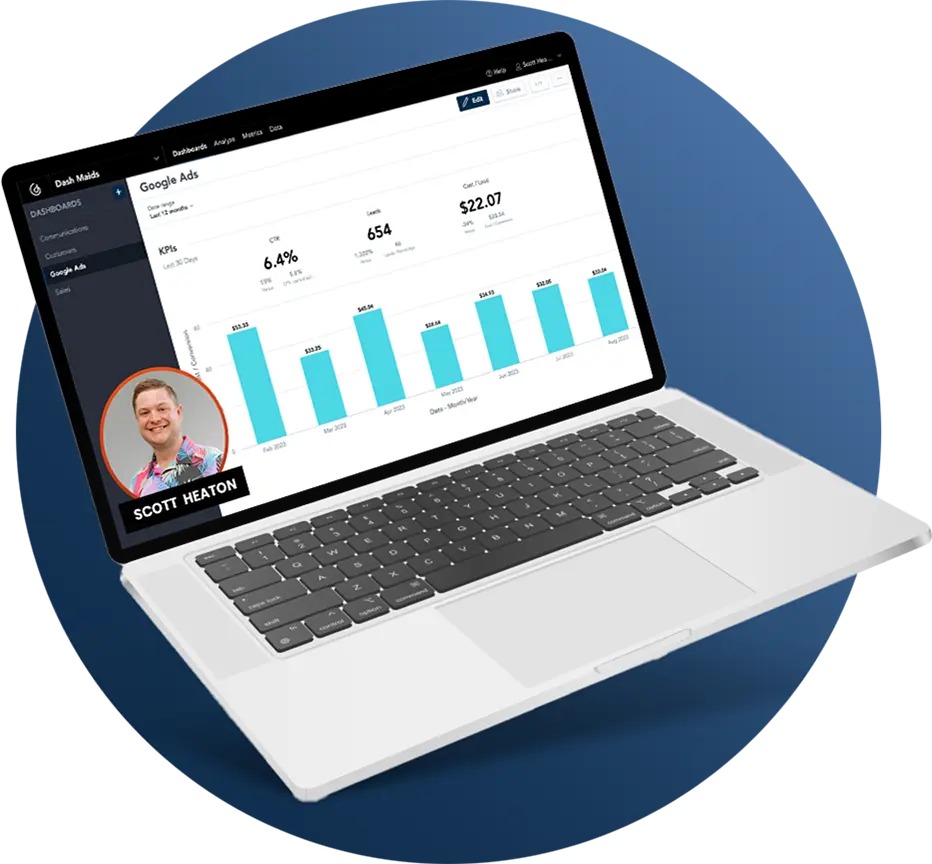From Clicks to Conversions: The Evolution of Digital Marketing for Small Business
👇 Jump to videoIn today's fast-paced digital landscape, mastering digital marketing for small businesses is crucial for success. With the ever-evolving capabilities of Google Ads, businesses now have the tools to move beyond traditional click-based optimization and focus on driving real sales and conversions. This blog post explores how small businesses can harness these advancements to enhance their marketing strategies, providing a competitive edge in the digital world.
Understanding the Basics: Click-Based Optimization
When Google Ads first emerged, the primary focus for marketers was on optimizing for clicks. The strategy was straightforward: you paid for each click on a keyword, driving traffic to your website. The goal was simple—attract visitors and hope they converted into leads or sales. While this approach was groundbreaking in its time, it offered limited control over the quality of leads and potential conversions.
The Limitations of Click-Based Optimization
- Lack of Targeted Conversions: With only clicks as the primary metric, businesses couldn't differentiate between casual browsers and serious buyers
- Inefficient Spend: Companies often wasted resources on clicks that didn't translate into valuable leads or sales
- Minimal Insight: The absence of detailed data on customer behavior meant businesses were often left in the dark about what happened post-click
Advancing Down the Funnel: Beyond Clicks
The game-changer in digital marketing for small businesses is the ability to optimize further down the sales funnel. By integrating Google Ads with Customer Relationship Management (CRM) systems or accounting software, businesses can gain insights into what happens after the click—transforming their approach to optimization.
Integrating CRM for Deeper Insights
- Lead Tracking: By linking CRM data, businesses can identify which clicks convert into leads, allowing for more targeted ad spending
- Estimate Management: Understanding which leads result in estimates provides valuable data to refine marketing strategies
- Sales Conversion: With data on which estimates turn into actual sales, businesses can focus on optimizing for high-conversion traffic
The Process: Transitioning from Clicks to Sales
-
Gathering Initial Data
To begin, businesses need to gather initial data on their ads' performance. Start with click-based optimization to collect information on which keywords and ads drive traffic. Use this data to establish a baseline for further optimization.
-
Optimizing for Leads
Once enough data is collected, the next step is to shift focus from clicks to leads. This involves adjusting your Google Ads settings to optimize for lead generation, ensuring that the traffic driven to your site has a higher likelihood of converting into potential customers.
-
Moving to Estimates
As Google Ads learns which leads are more valuable, businesses can further optimize for estimates. This involves using CRM data to identify patterns and adjust bidding strategies to prioritize keywords and ads that generate estimates.
-
Targeting Sales
The final stage in this advanced optimization process is focusing on sales. By continuously feeding data back into Google Ads, the platform becomes adept at identifying and targeting ads that result in actual sales, maximizing return on investment.
The Benefits of Advanced Optimization
- Increased ROI: By focusing on the entire sales funnel, businesses can achieve a higher return on investment, ensuring that marketing dollars are spent effectively
- Better Quality Leads: Optimizing for sales rather than clicks leads to higher quality leads, ultimately boosting conversion rates
- Enhanced Business Insights: Detailed data on customer behavior post-click provides valuable insights for refining marketing strategies
Common Challenges and Solutions
While the benefits of moving down the funnel are clear, many businesses encounter challenges in the implementation process. Here are some common obstacles and solutions:
-
Challenge 1: Data Integration
Solution: Ensure seamless integration between Google Ads and your CRM or accounting system. This may involve using APIs or third-party tools to facilitate data flow.
-
Challenge 2: Lack of Technical Expertise
Solution: Consider hiring digital marketing experts or investing in training for your team to leverage advanced Google Ads features effectively.
-
Challenge 3: Resistance to Change
Solution: Educate your team on the long-term benefits of advanced optimization, highlighting success stories and potential ROI improvements.
Conclusion
Digital marketing for small businesses has come a long way since the days of simple click-based optimization. By leveraging the full capabilities of Google Ads and focusing on conversions throughout the sales funnel, businesses can unlock new growth opportunities and gain a competitive advantage. It's time to move beyond clicks and leads and start optimizing for what truly matters: sales and conversions.
As small businesses embrace this shift, they will not only enhance their marketing strategies but also build stronger, more profitable relationships with their customers. The future of digital marketing is here, and it's all about the funnel.
Get Your Free Marketing Plan with Exact Strategies For Doubling Your Website Leads
- Based on a decade of experience and millions of dollars in ad spend
- Includes pricing, timelines, deliverables, and realistic expectations for results

